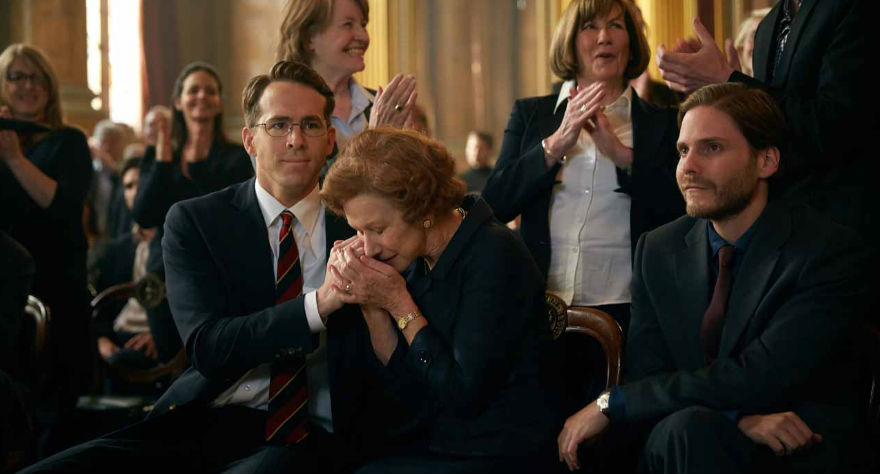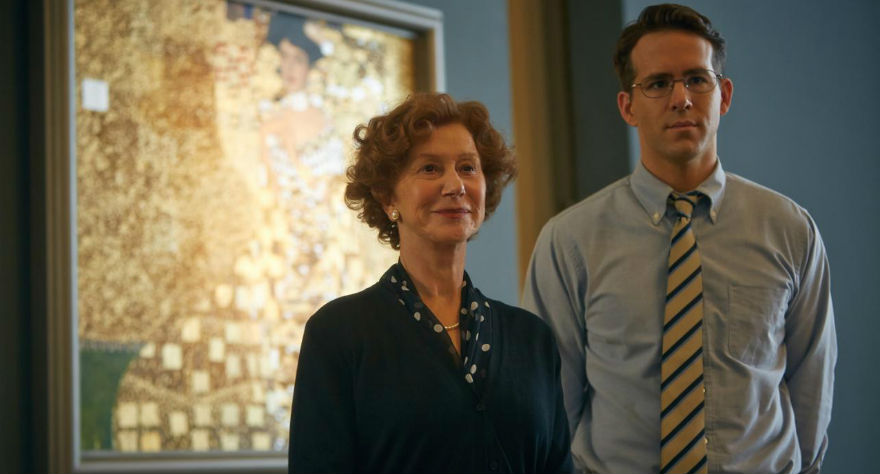Simon Curtis On ‘Woman in Gold’, Being Locked in the Past

Simon Curtis’ Woman in Gold chronicles the true story of Jewish refugee Maria Altmann, who decades after fleeing Austria for America took on the Austrian government to recover a painting of her aunt Adele that had been stolen by Nazis during the war. It was a hard-fought legal battle, as the painting had become the country’s veritable Mona Lisa, but with the help of American attorney Randy Schoenberg (the grandson of Jewish refugees), she ultimately found justice and inner peace, reclaiming her family’s painting and reconnecting with her past life. We spoke to Curtis while he was in San Francisco promoting the film.

Above anything the film seems to be about how Maria struggles with being tethered to her past.
She was forced to leave her home. The scene where she says goodbye to her parents is the last time they’re ever together. A bit of her is locked in that moment, and I think that’s what propels the film: at the end of her life, she’s the last one living who was part of that community.
Is that what fascinated you most about the true story?
I think it is. I love the fact that Maria’s life is a story about the twentieth century in a way. Vienna at the beginning of the century was this amazing place, a melting pot of all these great ideas. She and the painting ended up in America at the end of the century. It’s about America’s policy of immigration, too, because this refugee who lived 50-60 years in California teams up with the grandson of another refugee, and they take on this campaign.
Is one of the biggest hurdles of promoting Woman in Gold getting the idea out of people’s heads that it’s a Holocaust movie?
I’ve never worked out how many minutes we spend in the past, but most of it is in the present. That was very important. There’s a speech in the end where Randy says, “this is a moment where the past is asking something of the present.” That tussle is in this. It’s really a story about Randy and Maria in the present going on this voyage of discovery. He discovers the importance and value of his history, and she re-confronts her memories. That’s the story of the film.
You consider yourself an actor’s director. When you’re helping Ryan and Helen, are you molding their performances as a unit, or do you do it separately.
It’s both. But I was thrilled that they hadn’t even met before. They got on immediately, and there was a real spark. They offered much more humor than I was expecting. I love hearing people laugh during the film; it’s a great feeling.
Do you think actors are better at social interaction than the average person?
I don’t think there’s a rule for that. It’s certainly not true that actors always like being the life and soul of the party. There’s this thing of, “Notice me. Leave me alone. Notice me. Leave me alone.” The more I work with actors, the more I realize that every actor has a different version of how you can help them. My job is to work that out. Some actors want you to talk about everything, some want to be left alone. You have to intuit that in a sense.
Do you prefer directing for theater?
No, actually I don’t. I used to, but now I love doing a scene and then moving on. Theater is about having to recreate a scene time and time again.
In theater, performances build over time.
And they can get worse as well!
Do you feel a higher sense of urgency directing movies since you film a scene, and then it lives on forever?
There’s definitely a sense of urgency, but again, if you flip that around it becomes a part of the creative process.
The scenes set in the past look amazing.
Ross Emery is a brilliant DP. Really, there were three time periods in the film: the Adele “golden years”, the modern scenes, and the past, which was the end of an era.
It must be magical to walk through those period sets.
There’s certainly something magical about filming 1938 Vienna in Vienna. It got to us all. It was really poignant and moving. When the Nazi vehicles come in or when the Jews are painting on the wall, we were recreating actual footage and photos we found from the time.
Was the ratio of past scenes to present scenes always the same?
I don’t know. I always imagined it was about a fifth of the film in the past.
Was this your first time shooting an action sequence? It must have been fun.
Yes. Tatiana Maslany is extraordinary. She spent days running around Vienna. Days.
I think something people don’t talk about enough when it comes to actors is how they act with their bodies as opposed to just their voice or their face. I think Helen is great at that.
I agree. It’s interesting because some actors do the same thing every take, but she’s always doing something slightly different. But when you cut it together, it feels really secure. It’s a strange thing. Her instinct is fantastic, and she’s always incredibly well-prepared. I was always excited to start filming, and I always trust her instincts.
I grew up in the ’90s. I think that decade is far enough in the past now that we can sort of dress people up according to ’90s fashion, and it’s really weird.
I read somewhere that clothes in the ’50s, ’60s, ’70s, and ’80s were all so different, but we’ve pretty much been wearing the same clothes from the ’90s onwards. “The GAP years.” So it’s sort of tricky to recreate the ’90s. The cell phone Ryan has at the beginning was a big thing in those days.
The final almost dream sequence is something else.
We wanted something up-lifting. If you’d lost family, it would be lovely to see them one more time.
